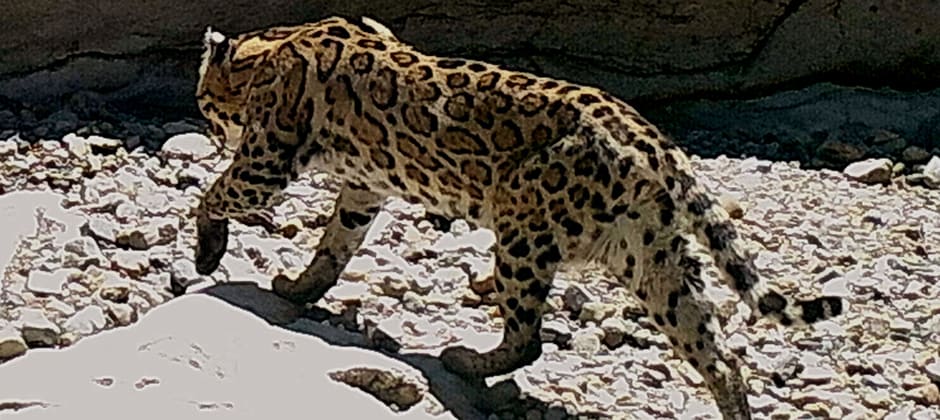Share this article
Researchers say Mexican ranch likely source of Ariz. ocelots
A breeding population of ocelots just 30 miles south of the border is likely the source of occasional cat sightings in Arizona, biologists say. The population is the northernmost known breeding population in Mexico, occupying desert land on a ranch in the Mexican state of Sonora.
Better understanding the cats there “will facilitate management and conservation of this endangered spotted cat in both northwestern Mexico and southeastern Arizona,” researchers wrote in the recent paper published in PeerJ.
Ocelots (Leopardus pardalis) are listed as endangered in both the United States and Mexico.
“That’s the first evidence of ocelots actually breeding this close to the border,” Jessica Moreno, a biologist with the Coalition for Sonoran Desert Protection and one of the co-authors of the study told the Arizona Republic. “It makes very logical sense that from this population they’d be moving up to the Huachuca Mountains and northward.”
Researchers used eight years of remote camera images at the ranch to study how the ocelots used the landscape. They found the cats mostly used two areas — a riparian canyon and a mountain arroyo about 8 miles away. They counted 18 ocelots, including a female with a kitten documented in 2011.
The ocelots were most likely to be found far from paved roads and human habitation, they found. The property, called Rancho El Aribabi, is a conservation ranch, the authors said, and its owners have set aside land to protect ocelots and jaguars (Panthera onca), including portions that were designated a Protected Natural Area by the Mexican government, its highest designation of environmental protection on private lands.
The owners “have made voluntary conservation commitments that provide habitat and protection for ocelots and other animals and plants,” the authors wrote.
The researchers, which include a retired U.S. Fish and Wildlife Service wildlife biologist and biologists from the Sierra Club, Friends of Arizona Rivers and the Phoenix Zoo’s Arizona Center for Nature Conservation, worry about the impacts of a border wall on the cats’ ability to disperse.
“The ocelot is one of many species that would be adversely affected by additional fence construction,” they wrote. In addition to the structure itself, the lights, roads, vehicles and human presence associated with it “have the potential to sever currently viable ocelot movement corridors across the border, perhaps precluding natural recolonization of suitable habitats in the USA.”
Seventeen ocelots have been reported in Arizona between 1887 and 2019, and researchers believe they may have been overlooked in areas of southeastern Arizona.
“Although we cannot say how well the ocelot population at Rancho El Aribabi is demographically connected to other such populations, there is a continuity of hospitable landscape that could facilitate movements among distant populations,” the researchers wrote.
Header Image: Researchers have documented ocelots at a ranch in northern Mexico, which they believe is the source of occasional cats spotted in Arizona. ©James Rorabauch








